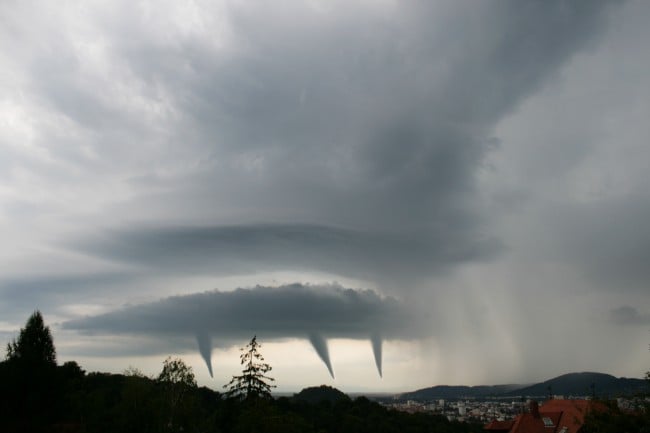
Without a doubt, tornadoes are among the most destructive natural disasters on the planet. Even Hollywood is hard-pressed to come up with anything as devastating as a tornado; the movie monster Godzilla can only breathe fire for so far, and Hollywood must look to the stars for comets and asteroids to top the power of a tornado.
There is no country on Earth that is immune to tornadoes, but despite the fact that the US sees more tornadoes than any other country, only a handful of the deadliest tornadoes in the world occurred in the US. This is largely due to the advanced warning systems and the ability of people to get to safety. Better construction techniques also contribute to the survivability of a US tornado.
On This Page:
The World’s 20 Deadliest Tornadoes
The 20 deadliest tornadoes in the world, starting with the least to the greatest, are:
20. Gainesville, Georgia, US – 04/06/1936; 203 deaths
In 1936 a rare double tornado struck Gainesville, Georgia with a class of F4. It destroyed much of the business district and started many fires, including one at the Cooper Pants Manufacturing Company where 60 employees perished. As well as the 203 deaths, 1,600 were injured and over 2,000 were left homeless. Financial losses equaled $12.5 million.
19. Faridpur and Dhaka Districts, Bangladesh – 03/19/1961; 210 deaths
This unusually early spring tornado was part of a tornado outbreak that affected Fardipur/Dhaka and Tupelo. The outbreak strongly indicated that the violent season for tornadoes in Bangladesh occurs around early April.
18. Calcutta, India – 04/08/1838; 215 deaths
Part of the destruction caused by this tornado was due to its slow speed. It moved along at about 6 miles per hour, allowing it to spend time sweeping the ground clean of everything.
17. Tupelo, Mississippi, US – 04/05/1936; 216 deaths
This tornado was retroactively set at F5 on the Fujita scale. Unlike Gainesville, it bypassed the business district and instead tore through residential districts, destroying even well-built mansions. Many homes near Gum Pond (now Gum Tree Park) were swept into the pond with families still huddled inside. The records say it leveled 48 blocks. Among the survivors of this tornado were Gladys Presley and her son, Elvis.
16. Border of Orissa (now Odisha) and West Bengal, India – 03/24/1998; 250 deaths
The destruction of this tornado was preventable, but the warning system was not handled with any degree of diligence. By the time it reached Orissa, the warning had been three hours late as each department relied on the other departments to be the one to send the final warning. Even the nearest weather station had no radar and was completely unaware of the pounding Orissa was taking.
15. St. Louis and East St. Louis, Missouri, US – 05/27/1896; 255 deaths
This F4 tornado spawned from a supercell. It carved a one mile wide path of destruction as it tore through town. The confirmed count of the dead is 255, but with terrible record keeping and a lack of paperwork at the time, many uncounted souls have some estimates as high as 400. It dealt over $10,000,000.00 in damage in 1896.
14. Comilla, Bangladesh – 04/14/1969; 263 deaths
Comilla was spawned by a separate storm from the one that spawned the East Pakistan (Dhaka) tornado at the #4 spot on this list. A common problem in Bangladesh, a poor early warning system and tightly packed population contributed to the high death count.
13. Bhakua and Haripur, Bangladesh – 04/29/1972; 300 deaths
Again, the poor early-warning systems in Bangladesh let this tornado catch many people unawares. The body count of 300 doesn’t take into account the number of people living in shanties with no records of their existences.
12. North of Cooch Behar/surroundings, India/Bangladesh – 04/19/1963; 300 deaths
This tornado touched down on the northern tip of Bangladesh near Cooch Behar, India. It sent debris flying for 30 miles. Some reports only show 139 deaths, but the official count is 300.
11. Natchez, Mississippi, US – 05/06/1840; 317 deaths
This tornado was retroactively listed as an F5. It followed the Mississippi River, clearing forest on both sides of the river. Most of the deaths were from flatboats on the river that were picked up and flung around, killing crew and passengers on each. Debris was reported as far away as 30 miles. Slaves on plantations were swept away along with their meager belongings and, tragically, were not generally counted in the official records of the dead.
10. Belyanitsky, Ivanovo, Balino, Russia – 06/09/1984; 400 deaths
Rated at F4 or F5 based on observed destruction, this tornado was part of a severe outbreak north of Moscow. The tornado was strong enough to disintegrate steel reinforced concrete. Severe thunderstorms dropped hail weighing about 2.2 pounds.
9. Yangtze River, China – 06/01/2015; 442 deaths
This tornado was an F1, but when it struck in the Yangtze River, a river cruise ship was caught unawares due to reasons that are still under investigation. (It was proved that other ships in the area received the warning and took action.)
8. Madaripur and Shibchar, Bangladesh – 04/01/1977; 500 deaths
This tornado tore through the heart of Madaripur and left 500 dead in its wake. No record exists of the financial damage, but all buildings and homes were destroyed in its wake.
7. Sicily, Italy – 12/1851; 500 deaths
Tornadoes are an extremely rare occurrence in Italy, usually happening on a local scale and not dealing much relevant damage. In late November or early December in 1851, however, two tornadoes that began as waterspouts swept through Sicily. Half the town of Castellamare was destroyed with 200 citizens killed. The true number of victims is unknown, but the assessment is around 500. It is the second worst in European history.
6. Magura and Narail districts, Bangladesh – 04/11/1964; 500 deaths
This tornado erased seven villages from the map. Death reports conflict with some reading as high as 1,400. The entire village of Bhabanipur was obliterated, leaving no survivors.
5. Grand Harbor at Valletta, Malta – 09/23/1551; 600 deaths
There is some question about whether this tornado struck in 1551 or 1556, but most sources cite 1551 as the year. It began as a waterspout that capsized four galleys, the Santa Fe, San Michele, San Filippo, and San Claudio. Though it is known as the Valletta tornado, the town of Valletta didn’t exist until 1566.
4. East Pakistan (Bangladesh) – 04/14/1969; 660 deaths
Initial reports said that over 1,000 had died, but the counts were later downgraded to 660, still a considerable number. The worst hit location in the city was the shanty-town of Demra, which sustained 90 mph winds.
3. Manikganj, Singair, and Nawabganj, Bangladesh – 04/17/1973; 681 deaths
This tornado wiped out the entire village of Baluchar and seriously damaged 9 other towns. Witnesses described two funnels that joined together into one large tornado that zig-zagged on its course. A boat with three people on it was blown over 3,000 feet from the banks of a river. No financial amount for the damage is available, but the loss of life alone makes it one of the worst tornadoes in history.
2. Tri-State, US – 03/18/1925; 695 deaths
Most long-track tornadoes are actually a family of tornadoes occurring in one event. This one, however, was a single tornado with a track of 219 miles, a world record. It affected Missouri, Illinois, and Indiana, hence its name. Throughout its entire course it was accompanied by severe downburst winds which widened its path of destruction from an average .75 miles to around 3 miles. Though the Fujita Scale was not around at the time, it has been estimated to be a very high F5 tornado with wind speeds of over 300 mph. A reason for the high fatality rate lies in the fact that weather reports, in a misguided effort not to panic anyone, were banned from using the word “tornado”. The weather report for the day was “normal”. As a result, the tornado caught everyone at the touchdown point in Ellington, Missouri, by complete surprise.
1. Daultipur and Salturia, Bangladesh – 04/26/1989; 1,300 deaths
The worst tornado in recorded history, this one left 80,000 people homeless. Every tree and home in a 3.75 square mile area of the tornado’s path was uprooted or destroyed. The tornado ripped through slums and poor areas where houses were of such poor construction that a strong wind could blow them over. It was an F5 tornado with an unknown amount of financial damage. Saturia and Mankganj were completely destroyed by this storm. Some scientists speculate that the drought conditions the region had been suffering contributed to the strength of the storm.
Ready to start your Storm or Wind Damage Repair?
Find ProsThe Worst Tornadoes in US History
The criterion for a “worst” tornado varies from state to state. In states where very few deaths from tornadoes are reported, the yardstick is property damage. Where many deaths are expected during tornadoes, then the number of dead and injured becomes the yardstick. For purposes of this list, the number of casualties will be the determining factor.
25. Udall, KS – 5/25/1955; 80 dead
This tornado struck at 10:30PM and leveled the south half of the town. The north half of the town didn’t fare much better with all but one home being damaged. 192 buildings and 172 homes were destroyed.
24. Lorain/Sandusky, OH – 6/28/1924; 85 dead
This F4 tornado formed over Sandusky Bay and killed 8 people and destroyed 100 homes and 25 businesses before moving east, crossing Lake Erie. It hit Lorain in the early afternoon and destroyed 500 homes, damaged another 1,000 more, and damaged every business in the downtown area. Damages were estimated at $12 million at the time.
23. Starkville, MS to Waco, AL – 4/20/1920; 88 dead
This tornado was part of a severe tornado outbreak that affected much of the south eastern United States. Seven tornadoes sprung up, six of them estimated at F4 and the final most likely an F5.
22. Worcester, MA – 6/9/1953; 90 dead
This F4 tornado struck in the late afternoon and dealt $52 million in damages as well as leaving 90 dead. It destroyed Assumption College, staying on the ground for about 90 minutes and traveling 48 miles.
21. Natchez, MS – 4/24/1908; 91 dead
Part of a larger tornado outbreak, this tornado was retroactively rated at F4. Though the official count is 91 dead, many newspapers of the day failed to list black people and poor sharecroppers among the dead, making the number potentially much higher.
20. Camanche, IA/Albany, IL – 6/3/1860; 92 dead
This tornado started off as two funnels 12 miles apart near Cedar Rapids. They came together roughly one mile east of De Witt. The path was reported to be 1,000 yards wide and about 80 miles long.
19. Snyder, OK – 5/10/1905; 97 dead
This F5 tornado lasted for about 2.5 hours. No record exists of the damage amount, but the western and northern parts of the town were completely demolished. 100 homes were destroyed and another 150 were badly damaged.
18. Poplar Bluff, MO – 5/9/1927; 98 dead
Leaving property damage of $4 million, it took only a few minutes to level over 40 city blocks. Early reports had 105 dead, but the final number was lowered to 98 as missing people became accounted for.
17. Gainesville, GA – 6/1/1903; 98 dead
One of the most tragic events of this tornado was the number of children killed when the mill they were working in collapsed. Accounts of this tornado are hard to come by as it has been overshadowed by coverage of the 1936 tornado in the same area. 100 newly built homes were destroyed.
16. Marshfield, MO – 4/18/1880; 99 dead
Estimated at F4, this tornado destroyed all but 15 buildings in town. About 10% of the population was killed. The second story of the local courthouse was torn off, but curiously most of the records stored therein were left in place.
15. Shinnston, WV – 6/23/1944; 100 dead
50 homes during this tornado were said to have been utterly destroyed in under a minute. It blew through Shinnston in less than two minutes and eyewitnesses to the aftermath describe many situations where a building was carried away leaving the contents untouched, such as a barn flying away leaving the horses in their stables.
14. Mattoon, IL – 5/26/1917; 101 dead
The Mattoon tornado lasted for 118 miles and stayed on the ground for 7 hours 20 minutes. It traveled at about 40 mph, and though there are no official records of the financial damage, experts estimate it to be about $1.28 million.
13. Omaha, NE – 5/23/1913; 103 dead
This tornado hit Omaha by surprise. It struck at a time when people were still dealing with the last of the snows. At F4, it stayed on the ground for 30 to 40 miles and went right through the heart of Omaha.
12. Goliad, TX – 5/18/1902; 114 dead
One of the worst in the state of Texas, 50 of the 114 people killed died as they took shelter in a church. An estimated F5, over 200 homes and businesses including several churches were destroyed.
11. Waco, TX – 5/11/1953; 114 dead
Over 200 businesses and factories were destroyed, and some casualties were caused as cars were crushed where they sat on the street. This was the tornado that led to the development of the nation’s severe weather early warning system.
10. Flint, MI – 6/8/1953; 116 dead
This was the deadliest tornado to strike Michigan. It was rated at F5. Of all of the deaths, all but 3 happened on a single four mile section of Coldwater Road.
9. New Richmond, WI – 6/12/1899; 117 dead
This was an F5 tornado. Most of the 117 deaths happened during fires that the tornado whipped up. Nothing in town was left untouched, but the entire town was rebuilt in about 6 months.
8. Amite, LA/Purvis, MS – 4/24/1908; 143 dead
Rated at F4, many of the dead were in rural areas. It is generally believed that the actual death toll is much higher as many poor people were not properly recorded.
7. Joplin, MO – 5/22/2011; 158 dead
Joplin saw a one-mile wide tornado with 198 mph winds. It has been rated at F4 and dealt over $3 billion in damage.
6. Woodward, OK – 4/9/1947; 181 dead
100 blocks were leveled by this tornado, described as an F5. Property damage exceeded $5 million. It was 1.8 miles wide and traveled for about 100 miles at 50 mph.
5. Gainesville, GA – 4/6/1936; 203 dead
Gainesville started as two tornadoes that met and turned into the deadliest tornado in Georgia’s history. It was part of an outbreak of 17 tornadoes that hit the south and the fires it started were as devastating as the tornado itself. Estimated at F5, it killed more than twice the number of people than the tornado that hit in 1903.
4. Tupelo, MS – 4/5/1936; 216 dead
Part of the outbreak that saw the Gainesville tornado (above), this F5 tornado ignored the business district for the most part. Instead, it destroyed residential sections, leveling 48 blocks including well-built mansions. Among the survivors was a very young Elvis Presley.
3. St. Louis, MO – 5/27/1896; 255 dead
This was part of a massive outbreak of tornadoes. Regarded as an F4, it touched down in St. Louis, at the time regarded as one of the largest and most influential cities in the nation. It left a one mile wide path of destruction as it crossed into East St. Louis where it became smaller but more intense. Though the official count of the dead is 255, some believe it to be much higher, even closer to 400. This is because many of the deaths happened on the river and bodies were washed away. Not all were recovered. The damage was close to $4 billion in today’s terms.
2. Natchez, MS – 5/6/1840; 317 dead
The Natchez tornado is the only recorded tornado in US history that has killed more people than it injured. In 1840 there was no National Weather Service and, therefore, no warning. Most of the dead were on the water when the tornado struck, and the cool rains before the tornado brought many on land outside, some to their porches, others to stroll in the streets. Based on the amount of destruction caused, some in the modern National Weather Service rate this tornado as a theoretical F6, a category that doesn’t officially exist.
1. Tri-State (MO/IL/IN) – 3/18/1925; 695 dead
The Tri-State tornado, an F5, cut across three states, hence its name. Missouri, Indiana, and Illinois were all affected. The Illinois towns of Gorham, Murphysboro, and DeSoto were completely destroyed along with the Indiana towns of Griffen, Owensville, and Princeton. During this time weather reports were prohibited from using words like “tornado” so as not to incite a panic among the public. As a result of this misguided policy, people received weather reports of “normal”, leaving them completely unaware of the impending disaster. The tornado lasted for about 3.5 hours and cut a 219 mile long path of destruction.
F5 Tornado Facts
Tornados are rated on the Enhanced Fujita Scale. The original Fujita Scale was inaccurate in its wind speed recordings, hence the improved Enhanced Fujita Scale. A tornado may thus be referred to as either “F5” or “EF5”. As the number on the Fujita Scale gets higher, the tornado is stronger. F5 is the highest rating on the scale. Here are the characteristics if an F5 tornado:
- Estimated wind speed 261-318 mph. Wind speeds can exceed 318 mph in a tornado, but these speeds have yet to be recorded at ground level.
- The relative frequency of an F5 tornado is less than 0.1%.
- The average width of the path of damage is around 3,600 feet. This does not include things picked up and thrown, which can get up to 30 miles away in some instances.
- The damage of an F5 tornado is incredible. Strong-framed houses are picked up off their foundations and just disintegrate in the winds. Cars and other large objects become missiles that can be thrown over 300 feet. Any trees that remain standing are completely debarked, and even steel-reinforced concrete structures are badly damaged.
- Because the damage of an F5 tornado is considered complete destruction, the F6 rating is purely theoretical. It is impossible for something to be more than completely destroyed. However, F6 exists as a way of noting wind speeds greater than 318 mph.
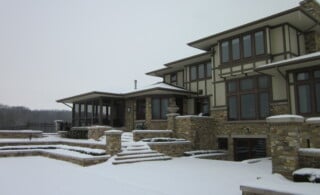 Snow Removal Requests Significantly Increase After Juno Blizzard of 2015
Snow Removal Requests Significantly Increase After Juno Blizzard of 2015 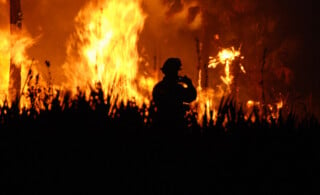 The Ultimate Guide to Wildfire Safety
The Ultimate Guide to Wildfire Safety 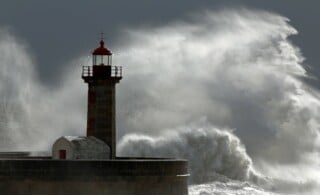 Hurricanes vs Tornadoes vs Cyclones – What’s the Difference?
Hurricanes vs Tornadoes vs Cyclones – What’s the Difference? 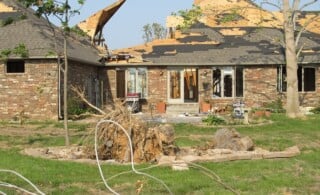 Disaster Restoration Services Provide Shelter from the Storm
Disaster Restoration Services Provide Shelter from the Storm 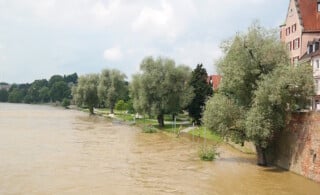 Water Damage Restoration
Water Damage Restoration 

I have studied tornados all my life I was a survivor of a f3 I have witnessed 5 memorable tornados 3 out of no where in my car I had a tornado pass over me sucked the air out of my lungs ears popped
The Omaha Nebraska tornado was in March, not May.
I’m only in middle school, yet, I have done my research. I do not see the pretty famous El Reno tornado, with a width of 2.3 miles, I believe. It was a devastating tornado for OH, so I think you should include it.
We had an outbreak in Pa. In 1985. 26 total tornados. 1 f5 and a slew of f4s. One was on the ground for 69 miles, and was 2.5 miles wide at it’s widest point. 68 died in Pa. 85 total dead in Ohio, Pa. and Ontario Canada. I remember that night well. The weather was spooky all day that day. Incredibly calm and still. It was like you sensed something very strange was going to happen, and it sure did.